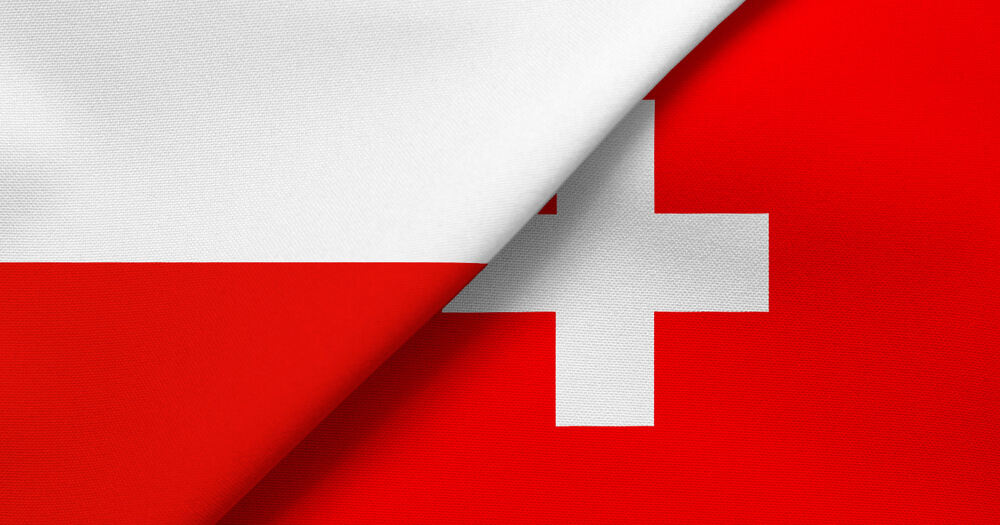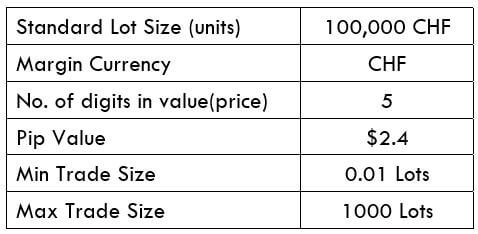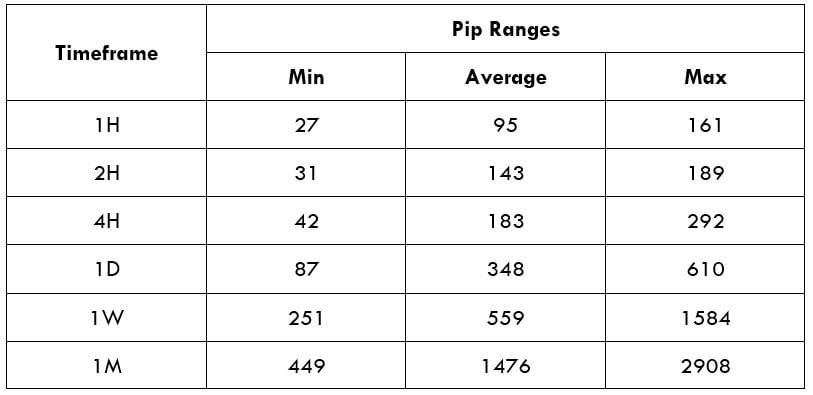Introduction
CHF/PLN is the abbreviation for the Swiss Franc alongside the Poland złoty. It is categorized as an exotic currency pair that usually has high volatility and low trading volume. Here, the CHF is the base currency, and the PLN is the quote currency. CHF is the official currency of Switzerland, whereas PLN is the national currency of Poland.
Understanding CHF/PLN
The current value of the pair represents the value of PLN that is corresponding to one CHF. It is quoted as 1 CHF per X PLN. For example, if the value of this pair is 4.1627, these many units of PLN are required to buy one Swiss Franc.
CHF/PLN Specification
Spread
In trading, the difference between the bid-ask price is described as the spread. Spread normally fluctuates from broker to broker. The estimated spread on ECN and STP accounts is given below.
ECN: 49 | STP: 54
Fees
There is a small fee or payment charged by the broker for each trade a trader does. This varies on both types of accounts and broker. There are zero fees charged on STP accounts, but a few extra pips are charged on ECN accounts.
Slippage
The difference between the cost at which the trader executed the trade and the cost he received from the broker is termed as Slippage. Fundamentally, Slippage hangs on two factors – Broker’s execution & market’s volatility
Trading Range in CHF/PLN
The trading range is a tabular interpretation of the minimum, average, and maximum pip movement in a different timeframe. Having expertise about this is necessary because it helps in handling risk as well as determine the appropriate times of the day to enter and exit a trade with marginal costs. Below is a table that illustrates the minimum, average, and maximum volatility (pip movement) on several timeframes.
Procedure to assess Pip Ranges
- Add the ATR indicator to your chart
- Set the period to 1
- Add a 200-period SMA to this indicator
- Shrink the chart so you can assess a large time period
- Select your desired timeframe
- Measure the floor level and set this value as the min
- Measure the level of the 200-period SMA and set this as the average
- Measure the peak levels and set this as Max.
CHF/PLN Cost as a Percent of the Trading Range
The number of pips the currency pair change in various timeframes is demonstrated in the table above. With this, we apply these values to get the cost percentage when the volatility is minimum, average, and maximum. This cost percentage will help us sort out an ideal time of the day to enter trades.
The understanding of the cost percentage is easy. If the percentage is above average, then the cost is higher for that specific timeframe and range. If the percentage is at a low level, then the cost is comparatively low for that timeframe and range. Note that, the total cost on a particular trade is calculated by combining the spread, Slippage, and trading fee.
ECN Model Account
Spread = 49 | Slippage = 5 | Trading fee = 8
Total cost = Slippage + Spread + Trading Fee = 5 + 49 + 8= 62
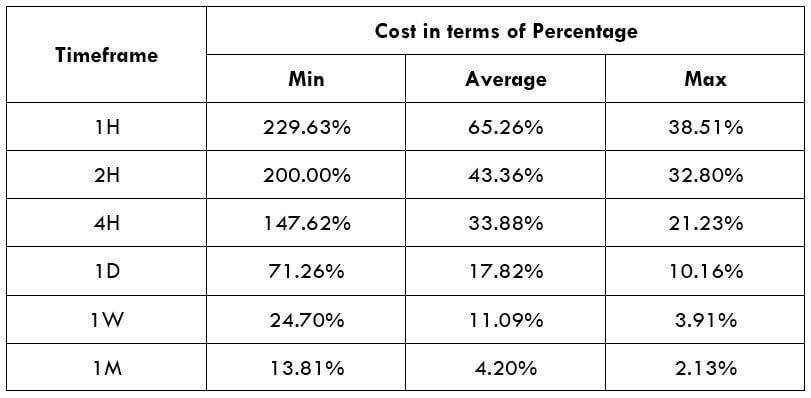
STP Model Account
Spread = 54 | Slippage = 5 | Trading fee = 0
Total cost = Slippage + Spread + Trading Fee = 5 + 54 + 0 = 59
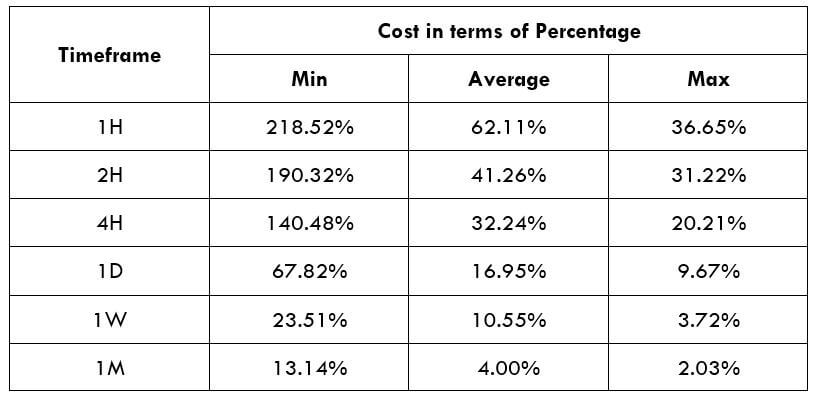
The Ideal way to trade the CHF/PLN
There are specific times a trader must deal with their trade to decrease both hazard and cost on the trade. This can be made feasible by understanding the above tables. Entering and exiting trades during any time of the day is highly not advised.
The percentages are most elevated in the min column. This means the cost is fairly high when the volatility of the market is low. For instance, on the 1H timeframe, when the volatility is 27 pips, the cost percentage is 218.5%. Meaning, one must bear high costs if they open or close trades when the volatility is around 27 pips. So, ideally, it is proposed to trade when the market volatility is above the average mark.

